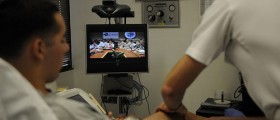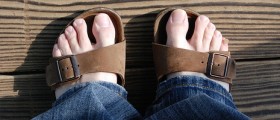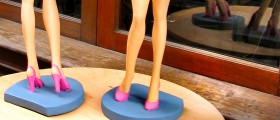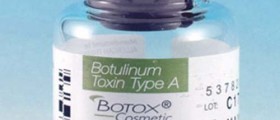
About toenail fungus
It is estimated that one out of every ten Americans, which makes approximately 23 millions of them, suffers from toenail fungus. This infection is not dangerous but it can eventually lead to total destruction of the nail plate or spread to other toes, which is why it should be treated as soon as diagnosed.
Toenail fungus is also among the most common forms of fungal infections. It is caused by a group of fungi called Dermatophytes. These fungi love dark, moist and warm environment, which is why they are so commonly found on feet and toes.
A nail affected by fungus first changes color, becoming yellow, gray, green, brown or even black. The nail then becomes thick and crumbly and its texture is no longer smooth. Eventually the nail may separate from the nail bed and fall off entirely.
Toenail fungus is not only frustrating and painful, but it is also socially embarrassing, because it does not look very appealing. Naturally, people seek various ways to cure it, whether it is with over-the-counter solutions or with home remedies. Many of them have found, however, that the most effective treatment for this problem is laser.
Laser treatment for fungus
There are currently two major figures when it comes to laser technology for toenail fungus- Patholase Pinpointe Foot Laser and the Noveon Laser. These technologies were initially used to treat other problems, such as cataract, dental problems and unwanted body hair. However, it was found that they are just as effective against toenail fungus.
Noveon Laser uses two different wavelengths of near-infrared light and points it to the fungus-infested parts of the body, killing the unwanted organisms. This technology has been approved for use on skin and nasal passages but it still has to be approved for toenail fungus.
Patholase Pinpointe Foot Laser has been used in dentistry since 2001 but, just like Noveon laser, it has not yet been approved by the FDA for the use on toenail fungus. This treatment costs around $1000 and it is not covered by health insurance.
Despite the fact that it has not been FDA-approved as of yet, laser treatment for toenail fungus seems to be working well. However, people who are wishing to try out this possibility in the battle against this annoying and persistent nail condition should still wait a year or two until official approval, not because laser is not safe for the nails, but because its effects may not be as permanent and reliable as advertised.

















Your thoughts on this
Loading...